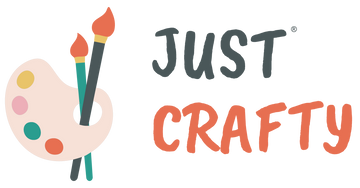The Ultimate Guide to E6000 Adhesives: Premium, Plus, and Shoe Goo 2 – Which One Should You Use?
When it comes to strong, reliable adhesives, E6000 is a trusted name in the DIY, crafting, and repair world. E6000 original is no longer allowed to be sold in Europe, so we take a look at the versions that are legal in the UK.
With multiple formulas available, it can be challenging to determine which version is best suited for your project. In this guide, we’re breaking down the differences between E6000 Premium, E6000 Plus, and Shoe Goo 2 - three powerful adhesives designed for different materials and circumstances. Whether you’re repairing footwear, creating handmade jewellery, or crafting with kids, this article will help you pick the best glue for the job.
Overview of the E6000 Adhesive Family
The E6000 line is known for its industrial-strength hold, flexibility, and ability to bond to a wide range of materials, including fabric, leather, metal, glass, plastic, and wood. But not all E6000 formulas are created equal - each has been designed with specific use cases and user preferences in mind. The original E6000 formula is no longer available for sale in the EU and the UK as it was not compliant with European standards, so we will review the range that is EU and UK safe.
Let’s dive into the three versions we’ll be discussing:
- E6000 Premium Industrial Strength Adhesive
- E6000 Plus Adhesive (Odourless & Safer)
- Shoe Goo 2 (Footwear Repair Formula)
E6000 Premium – The New Industrial Strength Formula
Best for: Heavy-duty, long-lasting projects where maximum strength is required. This glue has a medium odour, so it is suitable for indoor use, but we recommend that you have the area well ventilated.
Key Features:
- Industrial-strength bond
- Waterproof and flexible
- Bonds to metal, fabric, wood, glass, ceramic, rubber, vinyl, leather, and more
- Dries clear
- Resistant to temperature extremes
When to Use It:
E6000 Premium is your go-to when you're working on:
- Jewellery making: Excellent for attaching metal findings, rhinestones, and beads.
- Home repairs: Fix broken ceramic mugs, wood trim, or plastic components.
- Crafting projects: Works on mixed media pieces involving glass, wood, and fabric.
- DIY electronics: Bonds well without becoming brittle under heat fluctuations.
E6000 Plus – A Safer, Low-Odour Alternative to E6000 Original
Best for: Indoor crafting, family-friendly projects, and applications requiring less toxicity and odour.
Key Features:
- Low odour and non-flammable
- Photo-safe and washer/dryer safe
- Dries clear and flexible
- Bonds to many surfaces: fabric, glass, metal, wood, and more
- Still provides a strong hold, though slightly less than E6000 Premium
When to Use It:
E6000 Plus is ideal when:
- Crafting indoors or in small spaces
- Working with kids or in schools
- Creating fabric-based projects (like custom t-shirts or tote bags)
- Doing photo or scrapbook layouts, since it's acid-free and photo-safe
Considerations:
While E6000 Plus is much safer and easier to use than E6000 original, it doesn’t offer quite the same industrial strength. It's still impressively strong, but not quite on par for high-stress or load-bearing repairs.
Shoe Goo 2 – The Footwear Fixer
Best for: Shoe repair, high-flex areas, and waterproof sealing.
Key Features:
- Specifically formulated for repairing footwear
- Bonds to leather, rubber, vinyl, canvas, and more
- Designed to withstand high impact, flex, and stress
- Water-resistant and abrasion-resistant
- Strong but flexible hold
- Low odour
When to Use It:
Shoe Goo 2 should be your adhesive of choice when:
- Repairing training shoes, boots, or sandals
- Sealing worn soles or patching holes in rubber or leather
- Waterproofing minor cracks or splits in footwear
Considerations:
While Shoe Goo 2 can bond to other materials, it’s optimised for flexible, high-wear applications like shoes. It’s also a better choice than traditional E6000 when flex, abrasion, and moisture resistance are critical.
Quick Comparison Table
| Feature | E6000 Premium | E6000 Plus | Shoe Goo 2 |
|---|---|---|---|
| Strength | ★★★★★ | ★★★★☆ | ★★★★☆ |
| Odour Level | Medium | Low (water-based) | Low |
| Flexibility | High | High | Very High |
| Waterproof | Yes | Yes | Yes |
| VOC Compliant | Yes | Yes | Yes |
| Kid-Safe | With supervision | Yes | With supervision |
| Best For | Jewellery, Plastics, heavy crafts | Fabric, indoor crafts, general repairs | Footwear repair |
Which One Should You Use?
- Use E6000 Premium when you need maximum strength and are working with non-porous materials, such as metal, glass, or plastic. Best for serious crafters and pros.
- Choose E6000 Plus for most indoor crafts, especially if you're working around kids or in shared spaces. It’s also great for fabric, paper, and lightweight DIY projects.
- Grab Shoe Goo 2 if you’re repairing shoes, boots, trainers, or anything that flexes with movement and gets heavy wear. It’s also a good pick for outdoor gear repairs like tent seams or rubber items.
Tips for Best Results
- Always clean and dry surfaces before applying any E6000 adhesive.
- Use clamps or weights to hold items in place while curing.
- Cure time varies: most formulas dry to the touch in 30 minutes, but a complete cure may take 24–72 hours.
- Store tightly sealed in a cool, dry place to extend shelf life.
Final Thoughts
Each E6000 formula has its place in the toolbox of crafters, DIY enthusiasts, and repair experts. Whether you’re glueing rhinestones onto a t-shirt or a necklace, repairing a trainer, or bonding fabric for a home decor project, choosing the right E6000 adhesive can make all the difference in durability and ease of use.
Do you have a project you're working on and aren't sure which version to use? Drop your questions in the comments—we’re here to help you glue it right!

